Hyundai i10 vs Mercedes A-Class Saloon – Which model is better for everyday use?
Both models have their strengths – but which one suits you more?
Compare performance, efficiency, price and space directly: Hyundai i10 or Mercedes A-Class Saloon?
Costs and Efficiency:
Price and efficiency are often the first things buyers look at. Here it becomes clear which model has the long-term edge – whether at the pump, the plug, or in purchase price.
Hyundai i10 has a clearly advantage in terms of price – it starts at 14600 £, while the Mercedes A-Class Saloon costs 32700 £. That’s a price difference of around 18159 £.
Fuel consumption also shows a difference: Mercedes A-Class Saloon manages with 0.70 L and is therefore convincingly more efficient than the Hyundai i10 with 4.90 L. The difference is about 4.20 L per 100 km.
Engine and Performance:
Under the bonnet, it becomes clear which model is tuned for sportiness and which one takes the lead when you hit the accelerator.
When it comes to engine power, the Mercedes A-Class Saloon has a convincingly edge – offering 320 HP compared to 90 HP. That’s roughly 230 HP more horsepower.
In acceleration from 0 to 100 km/h, the Mercedes A-Class Saloon is clearly quicker – completing the sprint in 4.80 s, while the Hyundai i10 takes 11.40 s. That’s about 6.60 s faster.
In terms of top speed, the Mercedes A-Class Saloon performs evident better – reaching 250 km/h, while the Hyundai i10 tops out at 175 km/h. The difference is around 75 km/h.
There’s also a difference in torque: Mercedes A-Class Saloon pulls clearly stronger with 450 Nm compared to 172 Nm. That’s about 278 Nm difference.
Space and Everyday Use:
Whether family car or daily driver – which one offers more room, flexibility and comfort?
Both vehicles offer seating for 5 people.
In curb weight, Hyundai i10 is clearly lighter – 996 kg compared to 1450 kg. The difference is around 454 kg.
In terms of boot space, the Mercedes A-Class Saloon offers distinct more room – 395 L compared to 252 L. That’s a difference of about 143 L.
When it comes to payload, Mercedes A-Class Saloon a bit takes the win – 490 kg compared to 423 kg. That’s a difference of about 67 kg.
Who comes out on top?
Overall, the Mercedes A-Class Saloon shows itself to be wins the duel decisively and secures the title of DriveDuel Champion.
It convinces with the more balanced overall package and proves to be the more versatile choice for everyday use.
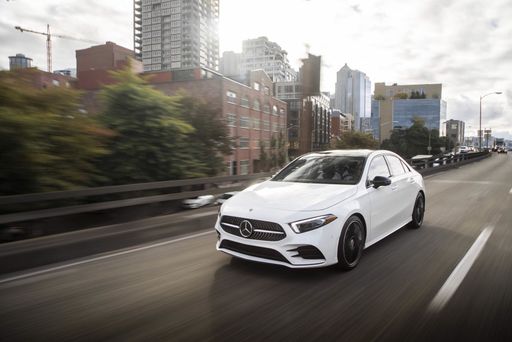
Mercedes A-Class Saloon
Hyundai i10
The Hyundai i10 impresses with its compact design, making it an ideal choice for navigating through busy urban environments. Its interior is surprisingly spacious, offering drivers and passengers comfort beyond what one might expect from a city car. The model combines efficiency and practicality, making it an attractive option for those seeking both economy and functionality in their daily commute.
details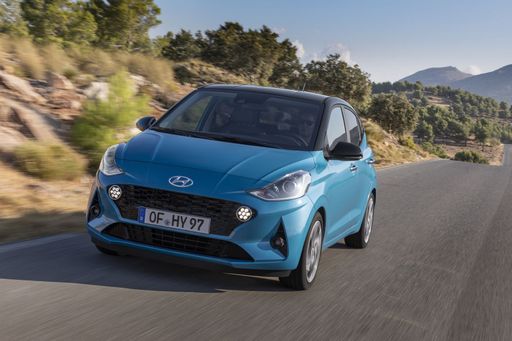 @ hyundai.news
@ hyundai.news
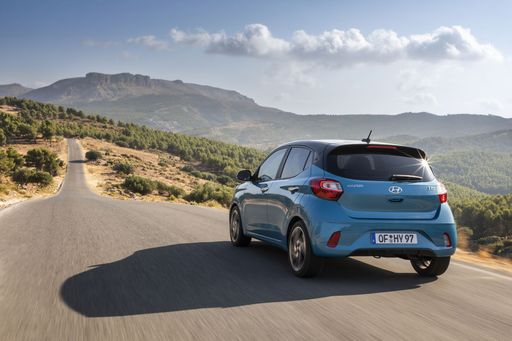 @ hyundai.news
@ hyundai.news
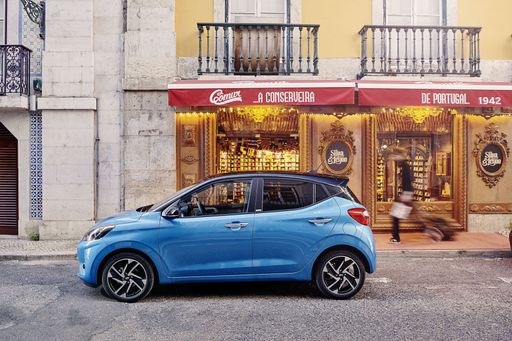 @ hyundai.news
@ hyundai.news
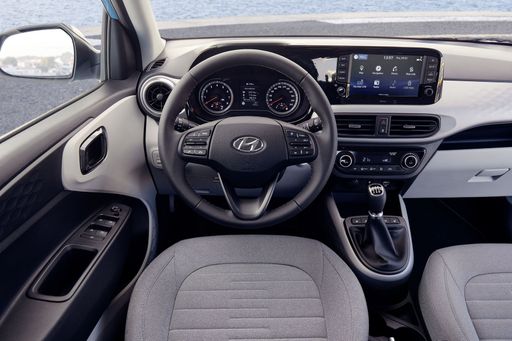 @ hyundai.news
@ hyundai.news
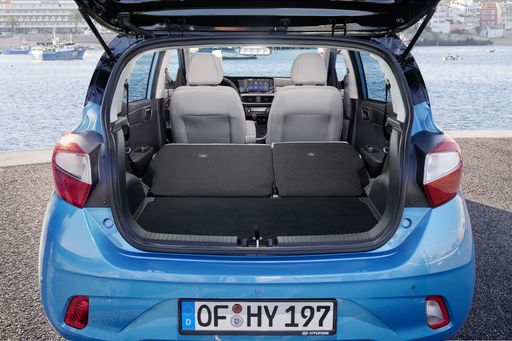 @ hyundai.news
@ hyundai.news
Mercedes A-Class Saloon
The Mercedes-Benz A-Class Saloon exudes a refined elegance, combining sleek design with a spacious interior that offers remarkable comfort for its passengers. Its advanced technology seamlessly integrates into the driving experience, providing both safety and convenience. This model continues to showcase Mercedes-Benz's commitment to delivering luxury within a compact framework.
details @ group-media.mercedes-benz.com
@ group-media.mercedes-benz.com
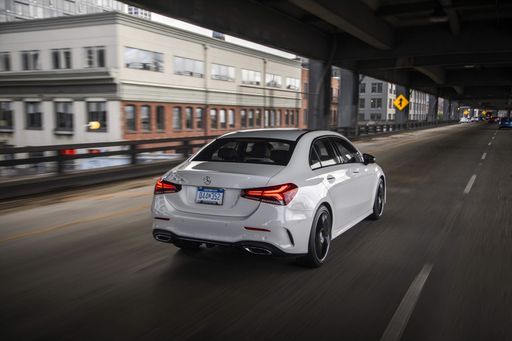 @ group-media.mercedes-benz.com
@ group-media.mercedes-benz.com
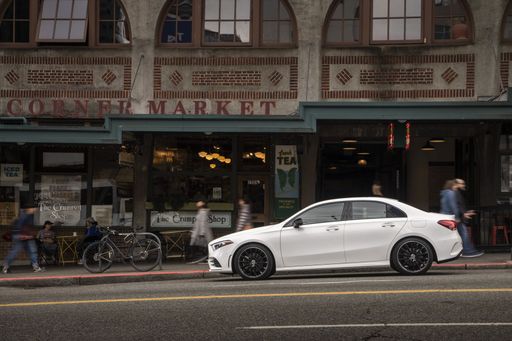 @ group-media.mercedes-benz.com
@ group-media.mercedes-benz.com
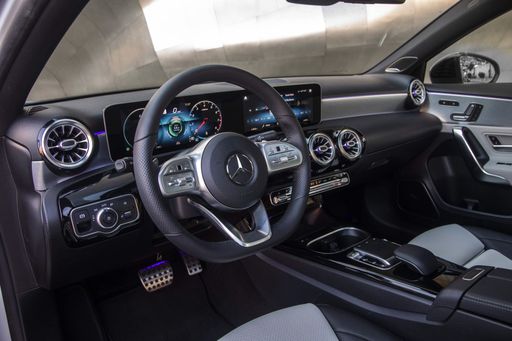 @ group-media.mercedes-benz.com
@ group-media.mercedes-benz.com
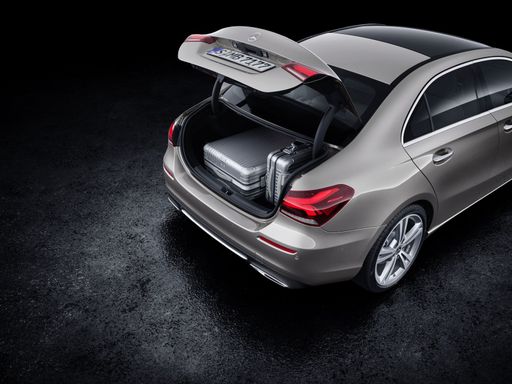 @ group-media.mercedes-benz.com
@ group-media.mercedes-benz.com

|

|
|
|
|
Costs and Consumption |
|
|---|---|
|
Price
14600 - 19000 £
|
Price
32700 - 55900 £
|
|
Consumption L/100km
4.9 - 5.5 L
|
Consumption L/100km
0.7 - 8.1 L
|
|
Consumption kWh/100km
-
|
Consumption kWh/100km
-
|
|
Electric Range
-
|
Electric Range
88 km
|
|
Battery Capacity
-
|
Battery Capacity
12.90 kWh
|
|
co2
110 - 124 g/km
|
co2
16 - 184 g/km
|
|
Fuel tank capacity
36 L
|
Fuel tank capacity
35 - 51 L
|
Dimensions and Body |
|
|---|---|
|
Body Type
Hatchback
|
Body Type
Sedan
|
|
Seats
4 - 5
|
Seats
5
|
|
Doors
5
|
Doors
4
|
|
Curb weight
996 - 1099 kg
|
Curb weight
1450 - 1705 kg
|
|
Trunk capacity
252 L
|
Trunk capacity
345 - 395 L
|
|
Length
3670 - 3675 mm
|
Length
4558 - 4570 mm
|
|
Width
1680 mm
|
Width
1796 mm
|
|
Height
1480 - 1483 mm
|
Height
1413 - 1429 mm
|
|
Max trunk capacity
1050 L
|
Max trunk capacity
-
|
|
Payload
344 - 423 kg
|
Payload
475 - 490 kg
|
Engine and Performance |
|
|---|---|
|
Engine Type
Petrol
|
Engine Type
Plugin Hybrid, Petrol MHEV, Diesel
|
|
Transmission
Manuel, Automatic
|
Transmission
Automatic
|
|
Transmission Detail
Manual Gearbox, Automated Manual
|
Transmission Detail
Dual-Clutch Automatic
|
|
Drive Type
Front-Wheel Drive
|
Drive Type
Front-Wheel Drive, All-Wheel Drive
|
|
Power HP
63 - 90 HP
|
Power HP
116 - 320 HP
|
|
Acceleration 0-100km/h
11.4 - 18.4 s
|
Acceleration 0-100km/h
4.8 - 9.9 s
|
|
Max Speed
143 - 175 km/h
|
Max Speed
206 - 250 km/h
|
|
Torque
93 - 172 Nm
|
Torque
200 - 450 Nm
|
|
Number of Cylinders
3 - 4
|
Number of Cylinders
4
|
|
Power kW
46 - 66 kW
|
Power kW
85 - 235 kW
|
|
Engine capacity
998 - 1197 cm3
|
Engine capacity
1332 - 1991 cm3
|
General |
|
|---|---|
|
Model Year
2024
|
Model Year
2024 - 2025
|
|
CO2 Efficiency Class
C, D
|
CO2 Efficiency Class
B, D, G, E
|
|
Brand
Hyundai
|
Brand
Mercedes-Benz
|
Is the Hyundai i10 offered with different drivetrains?
The Hyundai i10 is offered with Front-Wheel Drive.
The prices and data displayed are estimates based on German list prices and may vary by country. This information is not legally binding.
